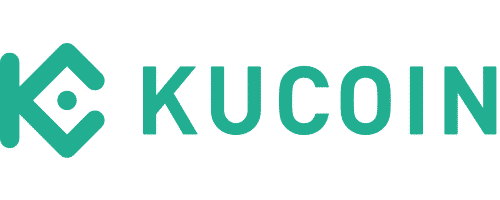Differences Between Spot and Futures Trading
What are the key differences and similarities between the two most common types of crypto trading?
Understanding the differences between spot and futures trading is crucial for anyone navigating the financial markets effectively.
Spot trading involves immediately buying or selling financial instruments at the current market price. This makes it straightforward but requires significant capital upfront.
Futures trading, on the other hand, allows you to commit to buying or selling assets at a set price in the future. This offers the advantage of leverage, using borrowed capital to increase the potential return on investment. Leverage lets you control larger positions with a smaller initial investment. However, it's important to note that while leverage can amplify profits, it also magnifies losses, making it a double-edged sword.
Different trading strategies arise from these fundamental differences.
Spot trading is generally considered less risky and more predictable. This is because you make transactions based on the current price and take immediate ownership of the assets.
Futures trading, meanwhile, can be highly speculative since it involves predicting prices at a future date. This can lead to substantial gains or losses.
Both spot and futures markets offer unique opportunities for traders to capitalize on market movements.
Whether you prefer the immediacy and simplicity of spot trading or the strategic potential of futures contracts, understanding your options can significantly enhance your trading strategy and empower you to make informed decisions.
Key Takeaways
- Spot trading involves immediate transactions at current prices.
- Futures trading uses contracts to buy or sell at future dates with leverage.
- Each market requires different strategies and risk management.
Understanding Spot Trading
Spot trading is the buying or selling of financial instruments with immediate delivery. This allows you to capitalize on current market prices and conditions without predicting future market movements.
Spot Market Basics
In spot markets, transactions are executed immediately at the current market price, known as the spot price. The asset—a cryptocurrency, gold, oil, or another currency—is exchanged with no delay.
Unlike futures trading, you don't deal with contracts specifying a future date.
The instruments traded can include commodities, currencies like USD or EURO, and various digital assets. High liquidity in spot markets ensures quick transactions and straightforward price discovery.
Price Determination in Spot Trading
The prices in spot markets are influenced by immediate supply and demand.
For instance, if the demand for gold increases, the price will go up accordingly. Conversely, an abundance of oil supply can lead to a price drop.
Unlike futures markets, where prices are based on future expectations, spot prices reflect an asset's current value.
This real-time price fluctuation makes spot trading ideal for day traders looking to profit from short-term price movements.
Advantages and Risks of Spot Markets
Spot markets offer the advantage of simplicity. The immediate settlement means you can quickly react to market changes.
Additionally, the transparency of spot prices provides clear signals for trading decisions.
However, the risks include high volatility, especially in markets like cryptocurrencies, where prices change rapidly.
Unlike derivatives, spot trading does not allow leverage, which might limit potential profits and minimize the risk of significant losses.
Balancing these factors is crucial for a successful spot trading strategy.
Exploring Futures Trading
Futures trading involves contractual agreements to buy or sell assets at a future date. It provides opportunities for hedging against price fluctuations and leveraging investments.
Futures Contract Overview
A futures contract is a standardized agreement between two parties to trade a specific asset at a predetermined price on a set expiration date. These contracts cover a range of assets, including commodities, stocks, and cryptocurrencies.
Futures contracts are traded in dedicated futures markets, which provide a regulated environment that ensures the contract's execution.
Key aspects include the delivery mechanism and margin requirements.
Delivery entails the physical or cash settlement of the underlying asset. Meanwhile, margin refers to the funds required to enter and maintain a position, offering traders leverage to amplify their potential returns.
Price Mechanism in Futures
Future prices are influenced by current spot prices, time until expiration, and expectations of future price movements.
Unlike spot markets, where trades occur based on current market value, futures pricing reflects anticipated changes in supply and demand.
As expiration nears, futures prices converge with spot prices. This predictability makes futures an essential tool for hedging.
For instance, commodity producers use futures to lock in prices, mitigating price volatility risk.
Understanding the price mechanism is crucial for effective trading and managing potential risks.
Benefits and Challenges of Futures Markets
Futures markets offer numerous benefits, such as leverage, which allows you to control large positions with relatively small investments. This feature attracts many traders looking to maximize profits.
Additionally, futures are valuable for hedging, helping to stabilize incomes against price swings in various financial markets.
However, leveraging also introduces significant risks. While it can amplify gains, it can equally magnify losses.
Being aware of the margin requirements and potential for margin calls is crucial.
Futures trading demands careful risk management strategies to prevent substantial financial setbacks.
For those exploring cryptocurrency futures, selecting the right platform is vital for maximizing potential.
Various platforms offer differing fees and leverage options, so research and due diligence are paramount to finding the most suitable choice for your trading strategy.
Comparing Spot and Futures Trading
Understanding the differences between spot and futures trading can significantly enhance your strategy. These differences stem from various aspects, such as trading objectives, liquidity, volatility, and contractual obligations.
Trading Objectives and Time Horizons
Spot trading is ideal if you prioritize immediate transactions and short-term gains. In spot markets, you buy or sell assets at the spot price, which reflects the current market value.
This method suits day traders or those looking to capitalize on daily price fluctuations. Immediate settlement is a crucial characteristic here.
Futures trading, on the other hand, typically involves a longer time horizon.
You engage in contracts to buy or sell an asset at a predetermined future date and futures price. This approach is often favored by those aiming for long-term positions or looking to manage risk through hedging.
You can protect against future price volatility by locking in a price today.
Liquidity and Volatility Considerations
Liquidity and volatility significantly influence your trading experience.
Spot markets generally offer higher liquidity because they involve direct buying and selling with fewer barriers to entry. The higher liquidity often translates to more stable prices and ease of trade execution.
Futures markets can exhibit different levels of liquidity, heavily influenced by the particular asset and contract expiration.
Some contracts might have thin trading volumes, leading to higher volatility.
Futures trading allows you to potentially gain more from price movements using leverage, though this amplifies risk. These markets can be less predictable, driven by factors affecting long-term expectations.
Contractual Obligations and Flexibility
When trading, contractual obligations define your flexibility.
Spot trading offers greater flexibility with fewer commitments. With immediate ownership transfer, you buy or sell assets outright, allowing you to react swiftly to market changes. Once a trade is completed, there are no ongoing obligations.
In contrast, futures trading involves more complex contractual obligations.
You must fulfill the terms of the futures contract by the specified date. Depending on the contract, you may be required to take delivery of the asset or settle in cash.
This can introduce additional considerations, such as storage costs or delivery logistics. Flexibility in closing or rolling over positions does exist, but it requires careful planning and awareness of expiry dates.
Market Analysis and Trading Strategies
Effective market analysis and trading strategies are vital for spot and futures trading success. You must employ various analytical techniques to evaluate market movements and make informed trading decisions.
Technical Analysis in Trading
Technical analysis focuses on studying past market data to predict future price movements.
By examining price charts, volume, and trends, you can identify opportunities for buying or selling assets.
Patterns such as head and shoulders, triangles, and double tops or bottoms often signal significant price shifts.
Technical analysis tools include moving averages, Bollinger Bands, and Relative Strength Index (RSI).
These help gauge market momentum and possible reversals. For example, moving averages smooth out price data, making spotting upward or downward trends easier.
Incorporating technical analysis into your strategy involves monitoring short-term price movements on a trading platform. This is especially useful in spot trading, where you benefit from immediate market circumstances.
Traders utilize these insights to make swift decisions, aiming to profit from fluctuating market prices.
Fundamental Analysis for Market Evaluation
Unlike technical analysis, fundamental analysis examines external factors influencing asset prices.
This includes economic indicators, financial statements, and market conditions. Your objective is to evaluate the intrinsic value of an asset, be it commodities, forex, or other financial instruments.
For instance, analyzing supply and demand dynamics in commodity markets can reveal potential price changes.
Understanding how government policies, interest rates, and economic growth affect forex markets equips you to make better trading decisions.
Fundamental analysis is crucial for long-term strategies in futures trading.
Investors hedge their positions based on anticipated market shifts, leveraging their knowledge to manage risks effectively.
You can make educated predictions about future price movements by conducting thorough research, enhancing your trading profits.
Understanding Margin and Leverage Regulations
Margin and leverage are critical components in both spot and futures trading.
Margin requirements dictate the minimum amount an investor must deposit to open a position. These requirements vary by the asset class and the regulatory body overseeing the market.
Leverage in Futures: Futures trading often involves higher leverage, enabling traders to control larger positions with smaller capital contributions. This can amplify both gains and losses, making margin requirements stricter.
Spot Market Margins: In the spot market, margin requirements are typically lower, reflecting the immediate nature of the transactions. However, overnight fees can accrue, influencing the overall cost of trading.



